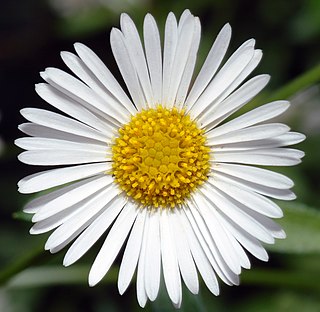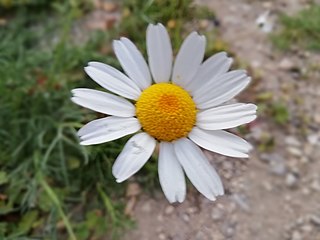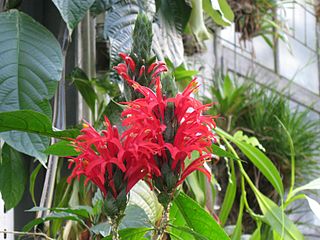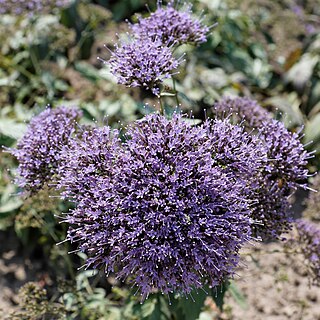
Clematis is a genus of about 380 species within the buttercup family, Ranunculaceae. Their garden hybrids and cultivars have been popular among gardeners, beginning with Clematis 'Jackmanii', a garden standby since 1862; more cultivars are being produced constantly. They are mainly of Chinese and Japanese origin. Most species are known as clematis in English, while some are also known as traveller's joy, a name invented for the sole British native, C. vitalba, by the herbalist John Gerard; virgin's bower for C. terniflora, C. virginiana, and C. viticella; old man's beard, applied to several with prominent seedheads; leather flower for those with fleshy petals; or vase vine for the North American Clematis viorna.

An alpine garden is a domestic or botanical garden, or more often a part of a larger garden, specializing in the collection and cultivation of alpine plants growing naturally at high altitudes around the world, such as in the Caucasus, Pyrenees, Rocky Mountains, Alps, Himalayas and Andes. It is one of the most common types of rock garden.

Sempervivum is a genus of about 40 species of flowering plants in the family Crassulaceae, commonly known as houseleeks. Other common names include liveforever and hen and chicks, a name shared with plants of other genera as well. They are succulent perennials forming mats composed of tufted leaves in rosettes. In favourable conditions they spread rapidly via offsets, and several species are valued in cultivation as groundcover for dry, sunny locations.

Rudbeckia hirta, commonly called black-eyed Susan, is a North American flowering plant in the family Asteraceae, native to Eastern and Central North America and naturalized in the Western part of the continent as well as in China. It has now been found in all 10 Canadian Provinces and all 48 of the states in the contiguous United States.

Syringa vulgaris, the lilac or common lilac, is a species of flowering plant in the olive family Oleaceae, native to the Balkan Peninsula, where it grows on rocky hills. Grown for its scented flowers in spring, this large shrub or small tree is widely cultivated and has been naturalized in parts of Europe, Asia and North America. It is not regarded as an aggressive species. It is found in the wild in widely scattered sites, usually in the vicinity of past or present human habitations.

Globularia is a genus of about 22 species of flowering plants in the family Plantaginaceae, native to central and southern Europe, Macaronesia, northwest Africa and southwest Asia. They are dense low evergreen mat-forming perennials or subshrubs, with leathery oval leaves 1–10 cm long. The flowers are produced in dense inflorescences (capitula) held above the plant on a 1–30 cm tall stem; the capitula is 1–3 cm in diameter, with numerous tightly packed purple, violet, pink or white flowers.

Primula elatior, the oxlip, is a species of flowering plant in the family Primulaceae, native to nutrient-poor and calcium-rich damp woods and meadows throughout Europe, with northern borders in Denmark and southern parts of Sweden, eastwards to the Altai Mountains and on the Kola Peninsula in Russia, and westwards in the British Isles.

Symphyotrichum novi-belgii, commonly called New York aster, is a species of flowering plant. It is the type species for Symphyotrichum, a genus in the family Asteraceae, whose species were once considered to be part of the genus Aster. Plants in both these genera are popularly known as Michaelmas daisy because they bloom around September 29, St. Michael’s Day.

Erigeron karvinskianus, the Mexican fleabane, is a species of daisy-like flowering plant in the family Asteraceae, native to Mexico and parts of Central America.

Argyranthemum frutescens, known as Paris daisy, marguerite or marguerite daisy, is a perennial plant known for its flowers. It is native to the Canary Islands. Hybrids derived from this species are widely cultivated as ornamental plants in private gardens and public parks in many countries, and have naturalized in Italy and southern California. There are many cultivars, but the most common has white petals.

Achillea ageratifolia, the Balkan yarrow or Greek yarrow, is a species of flowering plant in the daisy family Asteraceae, native to Greece and Bulgaria. Growing to 20 cm (7.9 in) tall and broad, it is a compact herbaceous perennial. It is a highly variable species, with three recognized subspecies. They have erect, simple, somewhat woody based stems. The narrow grey-green foliage resembles that of a related genus Ageratum, hence the Latin specific epithet ageratifolia. The solitary, daisy-like composite flower heads are white with yellow centres and about 2–3 cm across. They appear May–July in the northern hemisphere.

Iris aucheri, the Aucher-Éloy iris, is a species of flowering plant in the family Iridaceae. It is a bulbous perennial in the Juno group of irises.

Globularia cordifolia, the heart-leaved globe daisy, is a species of flowering plant in the family Plantaginaceae, native to the mountains of central and southern Europe, and western Turkey.

Halesia carolina, commonly called Carolina silverbell or little silverbell, is a species of flowering plant in the family Styracaceae, native to the southeastern United States.

Narcissus bulbocodium, the petticoat daffodil or hoop-petticoat daffodil, is a species of flowering plant in the family Amaryllidaceae, native to southern and western France, Portugal, and Spain. Some sources say that the species is also native to Morocco, but this is based on populations formerly thought to be varieties of N. bulbocodium but now regarded as separate species.

Oscularia is a genus of succulent flowering plants in the family Aizoaceae, native to semi-arid and rocky habitats in the Western Cape of South Africa.

Pachystachys is a genus of 12 species of flowering plants in the family Acanthaceae, native to rainforest in the Caribbean and Central and South America. They are evergreen perennials and shrubs bearing prominent terminal spikes of flowers with brightly coloured bracts.

Rhodanthemum hosmariense, the Moroccan daisy, is a species of flowering plant in the family Asteraceae, native to the Atlas Mountains of Morocco. It is a bushy, prostrate subshrub growing to 30 cm (12 in) tall and broad, with deeply divided silvery leaves and solitary, daisy-like, composite flower-heads in summer.

Trachelium caeruleum, common name blue throatwort, is a species of flowering plant in the family Campanulaceae native to the Mediterranean, where its native range includes Algeria, Morocco, Portugal, Spain, and Sicily. It has also become naturalized in a few areas, including New Zealand, the Azores, and parts of mainland Europe.

Erica australis, the Spanish heath or Spanish tree heath, is a species of flowering plant in the family Ericaceae, native to the western Iberian Peninsula and Northwest Africa. It is a bushy evergreen shrub growing to 2 m (6.6 ft) tall and broad, with tiny needle-like leaves and pink to purple bell-shaped flowers in late Spring. As a calcifuge, it requires sharply drained acidic soil in full sun. It is hardy down to −10 °C (14 °F).




















